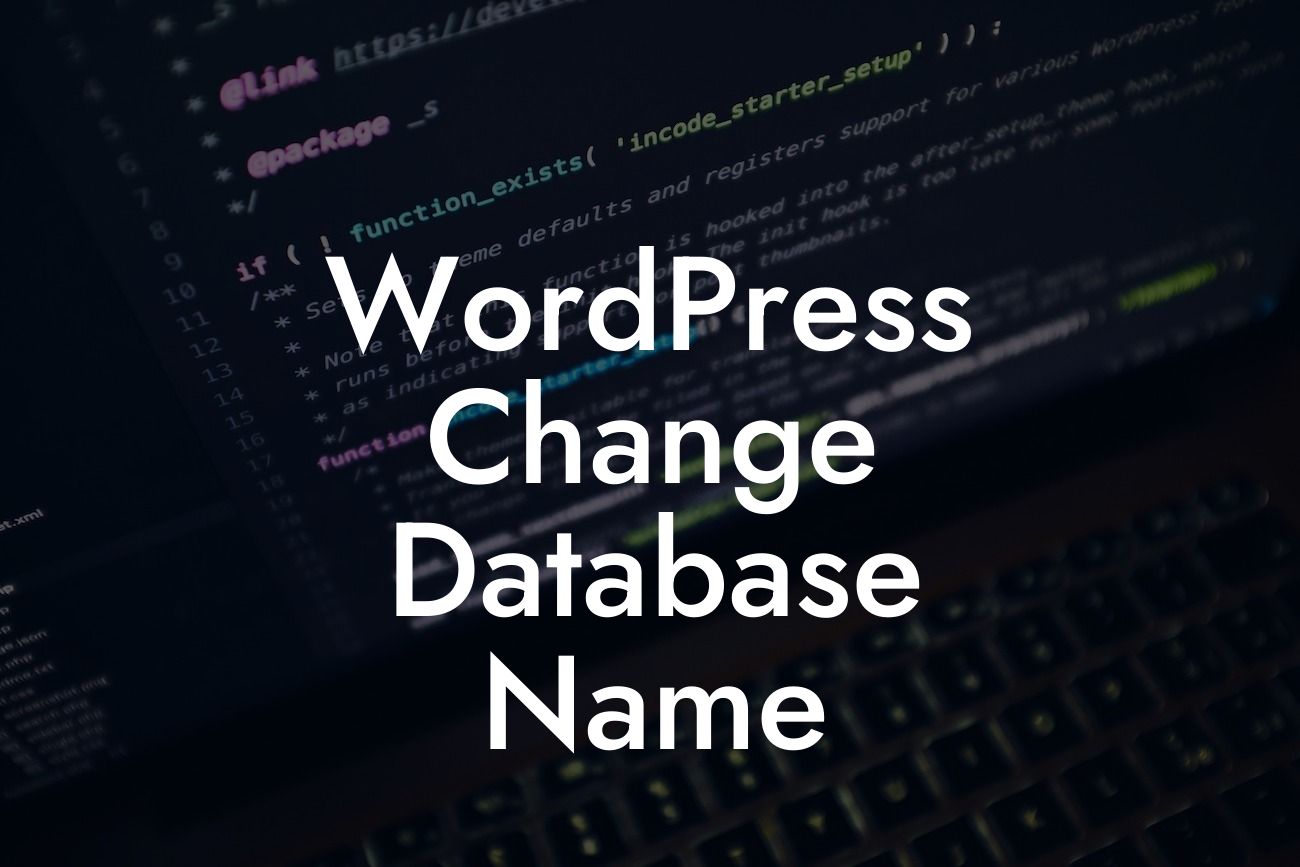Are you a small business owner or entrepreneur looking to change the database name in WordPress? Perhaps you've outgrown your current database or simply want to give it a more personalized touch. Whatever your reason may be, it's important to approach this process with care to ensure a seamless transition. In this guide, we'll provide you with detailed instructions and expert tips on how to change the database name in WordPress, empowering you to enhance your online presence and supercharge your success.
Changing the database name in WordPress requires a few essential steps. Follow these instructions to ensure a smooth process:
1. Backup your website: Before making any changes, it's crucial to back up your entire website. This ensures that you can restore your website to its previous state if anything goes wrong during the process.
2. Access your hosting provider: Log in to your hosting provider's control panel or cPanel to access the necessary tools for database management.
3. Navigate to phpMyAdmin: Once logged in, locate the phpMyAdmin tool. This tool allows you to manage your WordPress database directly.
Looking For a Custom QuickBook Integration?
4. Select the database: In phpMyAdmin, select the appropriate database for your WordPress site. Ensure that you have chosen the correct one to avoid any issues.
5. Rename the database: Look for the "Operations" tab and click on it. Find the "Rename database to" section, enter the desired new name, and click on the "Go" button to save the changes.
6. Update the wp-config.php file: With the database renamed, you'll need to update the wp-config.php file in your WordPress installation. Locate this file using an FTP client, open it, and find the line that says "define('DB_NAME', 'your_database_name');". Replace "your_database_name" with the new database name you just set.
7. Test your website: After saving the updated wp-config.php file, it's time to test your website to ensure everything is functioning correctly. Visit your website and check if it loads properly.
Wordpress Change Database Name Example:
Let's say you've been using the default database name "wp12345" but now want to change it to "mybusinessdb" to better reflect your brand. By following the steps outlined above, you'll be able to safely and effectively change the database name in WordPress. Remember to back up your website, access your hosting provider's control panel, navigate to phpMyAdmin, select the appropriate database, rename it, update the wp-config.php file, and finally, test your website to ensure a successful transition.
Changing the database name in WordPress is a powerful way to personalize your online presence and enhance your brand's image. With DamnWoo's WordPress plugins crafted exclusively for small businesses and entrepreneurs, you can take your website to the next level. Explore our other guides to learn more about optimizing your WordPress site, and don't forget to try one of our awesome plugins to supercharge your success. Also, remember to share this article with others who may find it useful on their WordPress journey.
[Concluding Call-to-Action]
Remember, at DamnWoo, we're dedicated to helping small businesses and entrepreneurs succeed online. Don't settle for cookie-cutter solutions. Embrace the extraordinary with DamnWoo's premium WordPress plugins and watch your online presence soar. Start your journey to success today!













